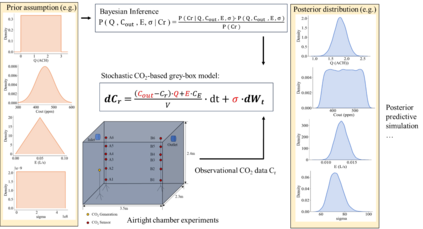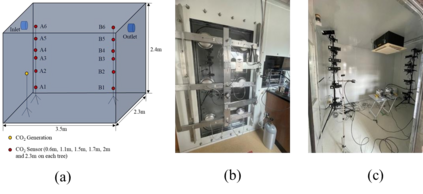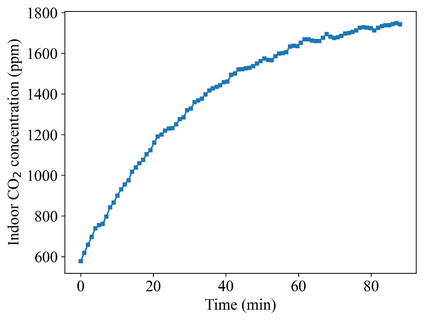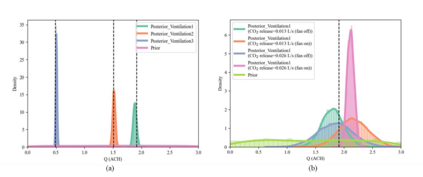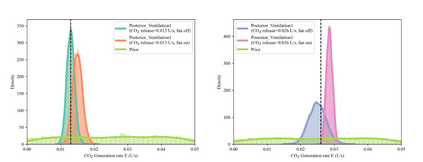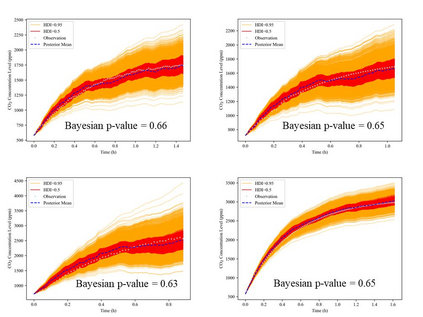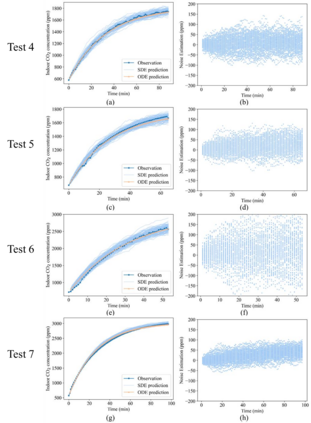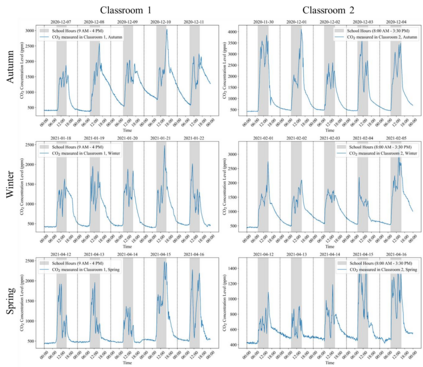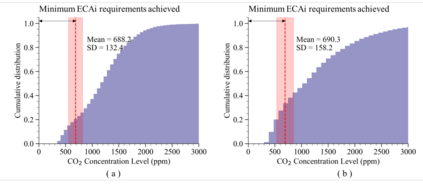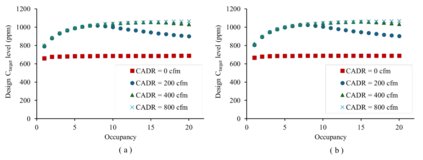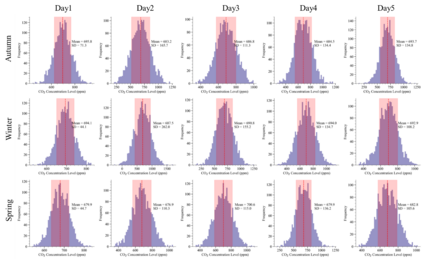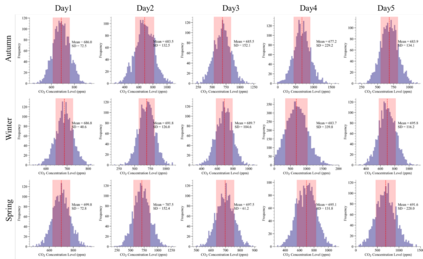The COVID-19 pandemic brought global attention to indoor air quality (IAQ), which is intrinsically linked to clean air change rates. Estimating the air change rate in indoor environments, however, remains challenging. It is primarily due to the uncertainties associated with the air change rate estimation, such as pollutant generation rates, dynamics including weather and occupancies, and the limitations of deterministic approaches to accommodate these factors. In this study, Bayesian inference was implemented on a stochastic CO2-based grey-box model to infer modeled parameters and quantify uncertainties. The accuracy and robustness of the ventilation rate and CO2 emission rate estimated by the model were confirmed with CO2 tracer gas experiments conducted in an airtight chamber. Both prior and posterior predictive checks (PPC) were performed to demonstrate the advantage of this approach. In addition, uncertainties in real-life contexts were quantified with an incremental variance {\sigma} for the Wiener process. This approach was later applied to evaluate the ventilation conditions within two primary school classrooms in Montreal. The Equivalent Clean Airflow Rate (ECAi) was calculated following ASHRAE 241, and an insufficient clean air supply within both classrooms was identified. A supplement of 800 cfm clear air delivery rate (CADR) from air-cleaning devices is recommended for a sufficient ECAi. Finally, steady-state CO2 thresholds (Climit, Ctarget, and Cideal) were carried out to indicate when ECAi requirements could be achieved under various mitigation strategies, such as portable air cleaners and in-room ultraviolet light, with CADR values ranging from 200 to 1000 cfm.
翻译:暂无翻译


